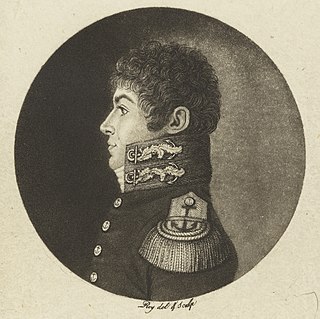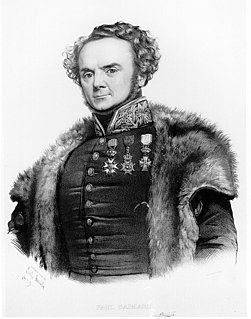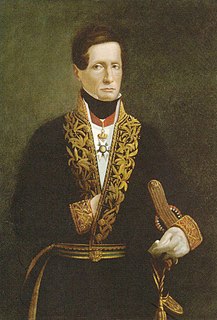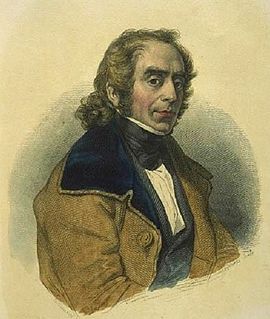Sources and references
- Roche, Jean-Michel (2005). Dictionnaire des bâtiments de la flotte de guerre française de Colbert à nos jours, 1671 – 1870. Group Retozel-Maury Millau. p. 452. ISBN 978-2-9525917-0-6. OCLC 165892922.
Seven ships of the French Navy have borne the name Uranie, in honour of Urania:

Louis Claude de Saulces de Freycinet was a French Navy officer. He circumnavigated the earth, and in 1811 published the first map to show a full outline of the coastline of Australia.
Twelve ships of the Royal Navy have been named HMS Repulse:

Charles Gaudichaud-Beaupré was a French botanist.

Joseph Paul Gaimard was a French naval surgeon and naturalist.

Jean René Constant Quoy was a French naval surgeon, zoologist and anatomist.
Many ships of the Royal Navy have been named HMS Garland. The name dates back to 1242, being the oldest confirmed ship name in the Royal Navy.
Twelve ships of the Royal Navy have been named HMS Active or HMS Actif, with a thirteenth announced:

Jacques Étienne Victor Arago was a French writer, artist and explorer, author of a Voyage Round the World.

Baron Jacques Félix Emmanuel Hamelin was a rear admiral of the French navy and later a Baron. He commanded numerous naval expeditions and battles with the Royal Navy as well as exploratory voyages in the Indian Ocean and the South Seas.

Hartog Plate or Dirk Hartog's Plate is either of two plates, although primarily the first, which were left on Dirk Hartog Island during a period of European exploration of the western coast of Australia prior to European settlement there. The first plate, left in 1616 by Dutch explorer Dirk Hartog, is the oldest-known artifact of European exploration in Australia still in existence. A replacement, copying the text of the original plus some new text, was left in 1697 – the original dish returned to the Netherlands, where it is on display in the Rijksmuseum. Further additions at the site, in 1801 and 1818, led to the location being named Cape Inscription.

David Jewett is known for his role in the sovereignty dispute between the United Kingdom and Argentina over the Falkland Islands. He was an American naval commander in the Quasi-War with France and following the end of that conflict he offered his services as a mercenary in both Argentina and Brazil. Licensed as a privateer by the United Provinces of the River Plate to seize Spanish ships, he was later accused of piracy following the seizure of US and Portuguese flagged vessels. He finished his career in the Brazilian Navy, serving under Lord Cochrane and died in Rio de Janeiro in 1842.

The Heroína was a privately owned frigate that was operated as a privateer under a license issued by the United Provinces of the River Plate. It was under the command of American-born Colonel David Jewett and has become linked with the Argentine claim to sovereignty of the Falkland Islands.
Uranie Bay is in the north east of East Falkland on the south coast of Berkeley Sound. It is named after the corvette L’Uranie, which was beached there in February 1820 after striking a submerged rock off Volunteer Point. The vessel was returning to France after almost achieving a full circumnavigation of the globe. Although there was some hope at the time of beaching that the hull could be repaired, this proved impossible, and the 109 sailors and 23 officers were stranded for two and a half months. They survived by hunting the cattle and horses that had been left on the islands for just such emergencies and, when all else failed, penguins. Remarkably, the liquor store, although virtually unguarded, remained intact until their ultimate departure.
Five ships of the Royal Navy have been named HMS Cerberus or Cerbere after Cerberus, the three-headed dog in Greek mythology that guards Hades:
Jean-François Tartu was a French Navy officer, and hero of the French Revolution.

Uranie was a frigate of the French Navy launched in 1788. She took part in a frigate action in 1793, capturing HMS Thames, and was renamed Tartu in honour of her captain, Jean-François Tartu, who was killed in the action. The Royal Navy captured her in 1797. She served as HMS Uranie until the Royal Navy sold her in 1807.
Five ships of the French navy have borne the name Clorinde, in honour of Clorinda in Jerusalem Delivered.

Rose de Freycinet, born Rose Pinon, was a Frenchwoman who, in the company of her husband, Louis de Freycinet, sailed around the world between 1817 and 1820 on a French scientific expedition on a military ship, initially disguised as a man. While not the first woman to circumnavigate the world, she was the first to record her experiences, in a diary. Being not intended for publication and being both frank and personal musings about people, places and events, her writings represent an important anthropological resource.
Twelve ships of the French Navy have been named Cérès: